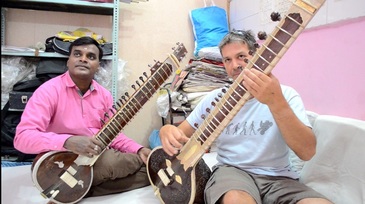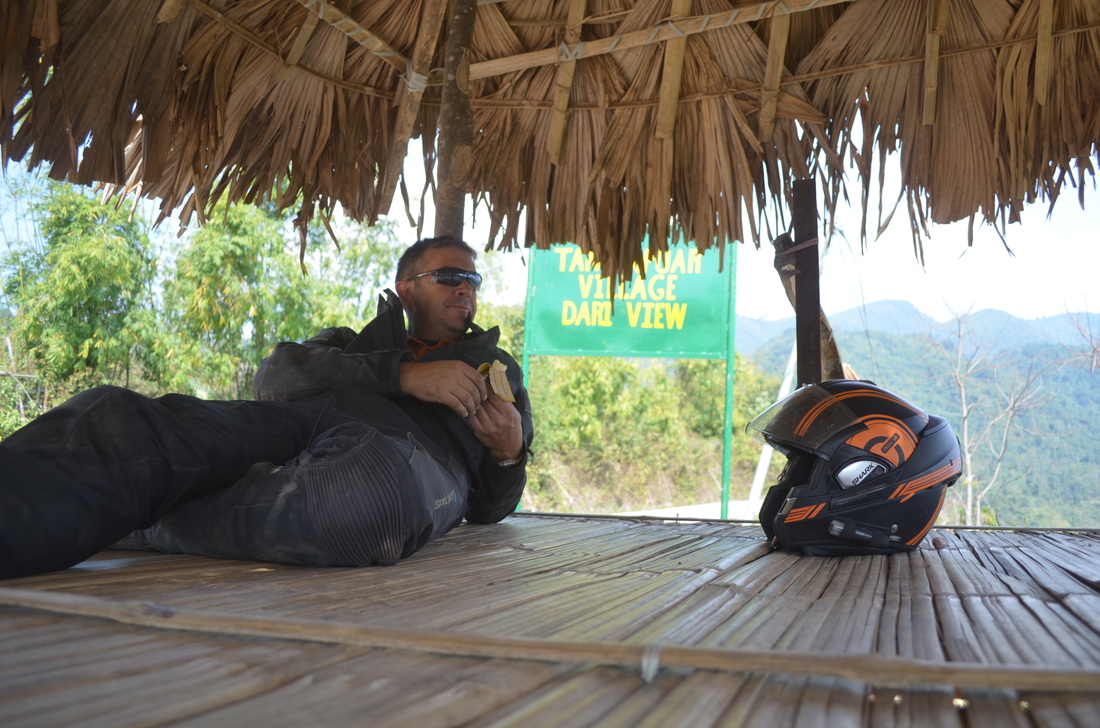Drugs are bad, so says all the personal, moral and health education blah in the Western world, and I doubt if many teenagers pay much attention but India has a different perspective on this stuff. There is apparently a part of Hinduism which believes that Shiva created cannabis and therefore its use is not just acceptable but actively encouraged in order to be at one with Shiva. And it seems that half the population of the sub-continent are constantly chewing betel nut (known as paan) which apparently produces a natural “chilled” high, and definitely results in the most revolting red stained, rotten teeth and causes its chewers to spit huge gob-fulls of red phlegm onto the pavements, walls, toilets, and out of vehicles onto whatever is passing. Beware the flying betel nut spit, looping with remarkable speed and trajectory, doesn’t get in your eye when overtaking buses, trucks and tuk-tuks. But be most wary of the late night tuk-tuk owners who agree to drive you through the tiny city streets back to your guest-house, but not until he has crammed you all into his tiny 3-wheel rickshaw and argued the location, route and price. Then he will most likely mooch over to his friend with a ganja pipe, take several huge hyper-ventilating drags on some herbal THC, lope back over to you, eyes wide as saucers, grinning inanely through rotten red fangs and make a snake-line (bees go in much straighter lines than stoned tuk-tuk drivers) towards your intended direction, blissfully unaware of the annoyances of oncoming traffic, bicycles and kerbs, all of which get collected as we play dope-dodgems. Western teenagers have no idea!
It’s sad to leave Varanasi and Dutch Marcus behind, both have been brief but brilliantly colourful. Marcus is heading West on his Indian born Enfield 350 but we’re aiming for the Eastern border with Burma although the first detour is Darjeeling. The guide-book waxes lyrical, the sublime winding mountain road promise much, the fresh air appeals, the views start off spectacular but the town at the top is frustratingly shrouded in cold clouds. At about 2000m up the mountain we ascended into the cloud layer and got stuck in it for the next three days. I’m sure on a clear day Darjeeling is a gem but at under 10°C with thick cloud creating nasal precipitation it’s a bit of an anti-climax. But hey, the highlight of freezing in Darjeeling is visiting Auntie Kusum, the 5 second tea lady in the Happy Golden Café, just outside the rickety tea processing workshop which exclusively supplies Harrods. “Auntie” is the generic Asian salutation for ladies who are older than you, but it completely fits Auntie Kusum who bustles around explaining the art of tea; she is the most engaging tea aficionado, no simile or metaphor required. Auntie Kusum invites us into her little house to engage in her tea ceremony, she shows us how to smell tea properly (there’s a technique, you know), and how to make pure Darjeeling tea using the best tips in only 5 seconds. She’s right, it’s a heavenly infusion, but I can’t tell you how to do it, you’ll have to visit her in Darjeeling or pop round to my house for the short period of time that my 100g packet lasts back in England. That’s assuming her purest picked tips survives the bottom of my pannier for the next few months.
The Brahmaputra river, running through the Assam valley is the only male river in India, all the other rivers are girls. Assam is a stunning, beautiful state. It’s home to various wildlife sanctuaries, quintessential Asian stilt-hut villages, wide expanses of mud / sand flats, banana and tea plantations, nearly-eco-hotels, and small towns with one or two (hundred) over-inquisitive local men. Over-inquisitive man number one was staying in the same nearly-eco-hotel as us, just South of Gowahati. He was clearly on a weekend jolly to have a few beers in a rural environment and a ride on an elephant. No problem there, but over-inquisitive men with beer tend to lose their inhibition, and most Indian men don’t have much in the way of inhibition or awareness of personal space and belongings at the best of times. To them, anything unusual is fair game to be poked, prodded, fiddled, switched, sat on and selfie-d, irrelevant of whether it’s a person or motorbike. So starts salutary tale No 4. If one parks one’s expensive motorbike propped on its side stand next to Aussie Brett’s expensive motorbike (also propped on its side stand), which is parked next to Swiss Lawrence’s expensive motorbike in a quiet nearly-eco-resort in India you should expect that the group of guys drinking and singing on the other side of the open-air bamboo-clad restaurant will eventually not be able to contain their inquisition any longer and go and try to mount your motor. It must have been late, and they must have been pissed when an idiot climbed on and then toppled off my bike, dropping it into Brett’s which fell into Lawrence’s which stood fast but they all took the toll of over half a ton of metal, plastic and petrol falling into each other under the control of a couple of pissed fuck-wits. The following day the fuck-wits fled the crime scene at 6:30am but were strongly encouraged by the hotel management to return to deal with their problem before things got acrimonious. They had probably never seen a Rupert in full grumpy-teacher-mode. And with a hangover one has to feel for the lead-fuck-wit who received a very clear lesson in never, ever touching anyone else’s belongings. The cracked screen, broken heat-grip cable, bent hand-guard, scratches, scrapes and knocks are not immediately or fully repairable here in India but it’s amazing what glue and gaffer-tape can sort out for now.
But on a more positive front I was bounced around a wild rhino sanctuary on the back of an elephant and got up-close and personal to some scary beasts who look like they have been around since the dinosaurs. Later, we rode down through the barren countryside of Meghalaya (known as Scotland of the East due to the rain and cold) to find the living root bridges. Huge tree trunks and flying roots have been woven to span rivers, although the so-called walkway ten metres up was, at times, a narrow tryst of intertwined fibres from opposing trees which sit over 40 metres apart across a ravine and didn’t look like it could or should be able to hold my weight. We found some of the friendliest guest-house owners who built bonfires and served feasts of traditional chilli dishes. We decided to take some own-time too. Lawrence went to stay with some local villagers down near the root bridges to engage in some indigenous life. Brett had had enough of slumming it and headed for Imphal to seek a decent hotel although ironically managed to find one of the worst roads in India en-route past Silchar. And I decided I hadn’t quite had enough remote riding of late so I headed North up to the relatively undiscovered Himalayan foothills of Arunachal Pradesh.
Arunachal Pradesh sits at the very top of the North East corner of India, bordering China, Tibet and Myanmar. As such, it is one of the last states in India where you need a special permit to enter, which costs a relative fortune and takes ages to organise. I didn’t have ages or a fortune, I had a few days so I gambled on the Indians not manning every small state border, especially on the mountain passes. I was right; two out of three forays from Assam’s tea valley into the forbidden hidden fruits of Arunachal Pradesh proved … errr … fruitful! And what a fantastic mixed salad of greenery. OK – enough of the fruit & veg analogies! But seriously, the farthest reaches of North East India are the last and best hidden enclaves of calm in a country otherwise overrun by an exponentially spiralling population spawning craziness. I love Arunachal Pradesh for its wide river gorges with bubbling rapids and rounded rock formations, and for the mountains which climb endlessly, starting with wild banana, then bamboo, before ascending through fat-leaved deciduous trees to more sparse, delicate shrubs and flowers, to craggy, dusty mountains with waterfalls and army outposts. The culture is different up here too. These are local mountain-dwelling people, tourism is almost unheard of so the hand-carved benches, huts and vista-positioned rest-stops are for the local people to admire their surroundings. They probably didn’t consider the occasional passing westerner on a KTM but these perfectly positioned pit-stops on mountain bends seem purpose built for me. I am left to my own devises (again a rarity in India) when I stop for a photo, banana or nature-wee. Although they really are quite civic-minded up here, near each bamboo bench which always overlooks a stunning landscape they have built a small bamboo toilet hut. In every other state I’ve been through they just piss in the street! Up here in the fresh mountain air life is much more civilised; they serve proper tea (without milk), there are signs about nature conservation, you can drink directly from the waterfalls and for the second time in two months the Indian army invited me to join them for lunch. Happy days!


 RSS Feed
RSS Feed
